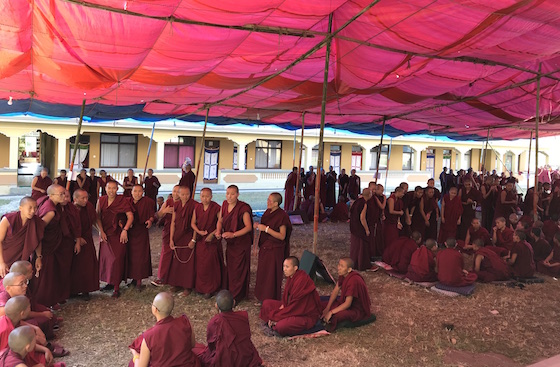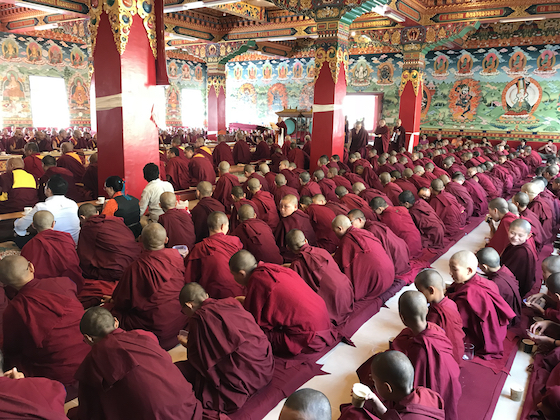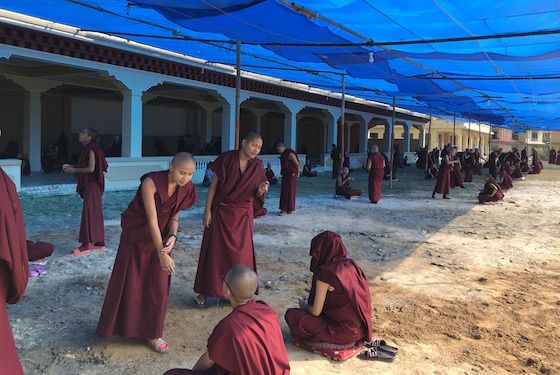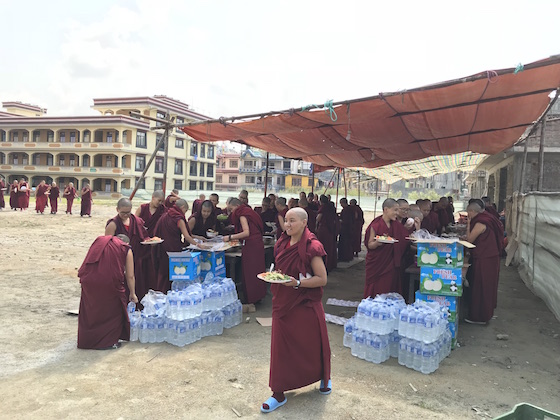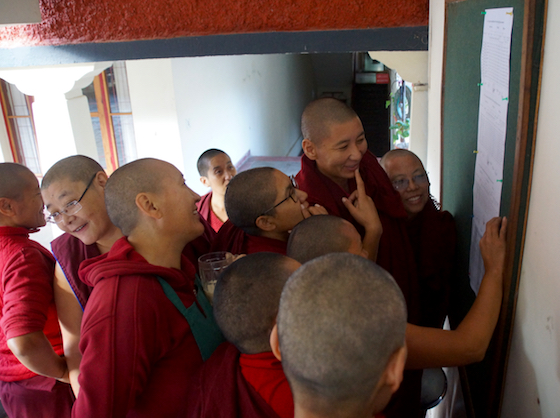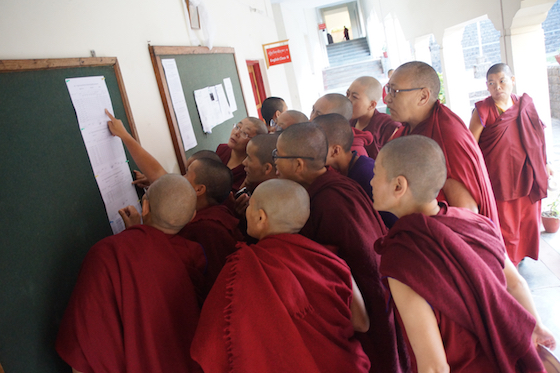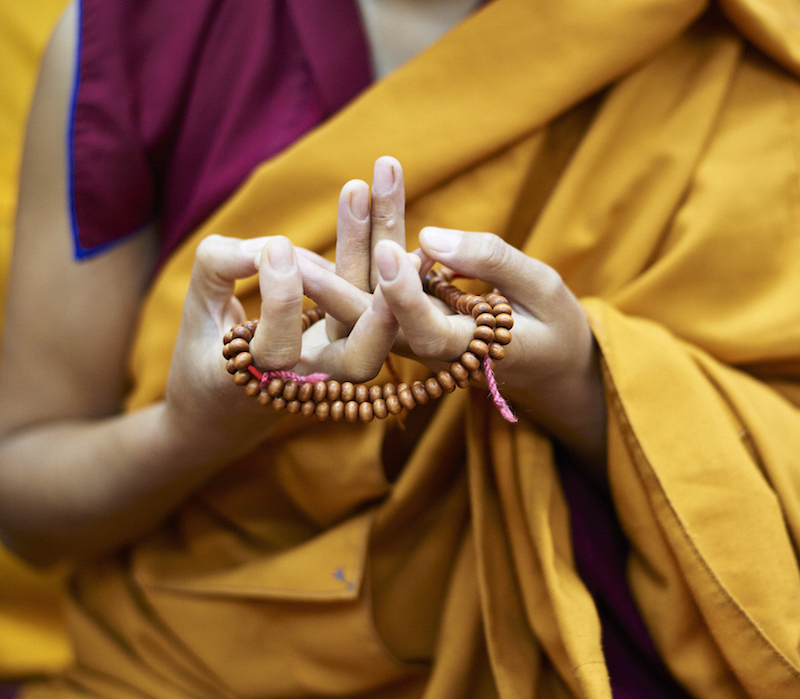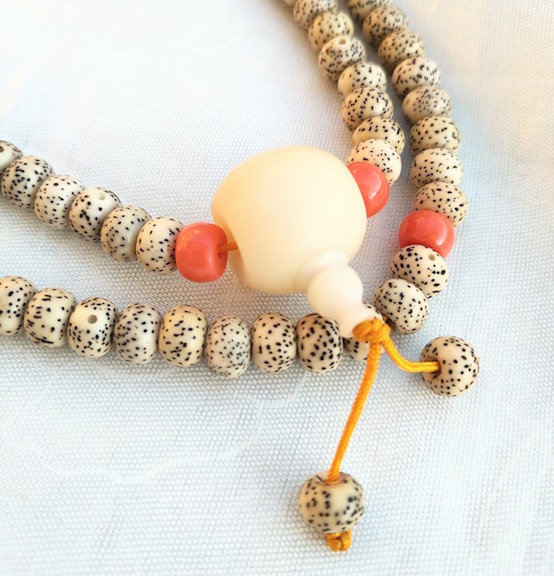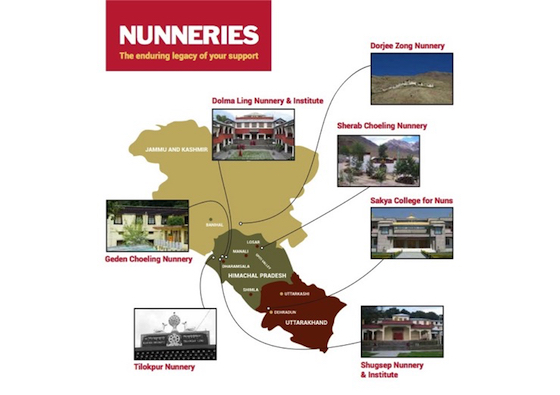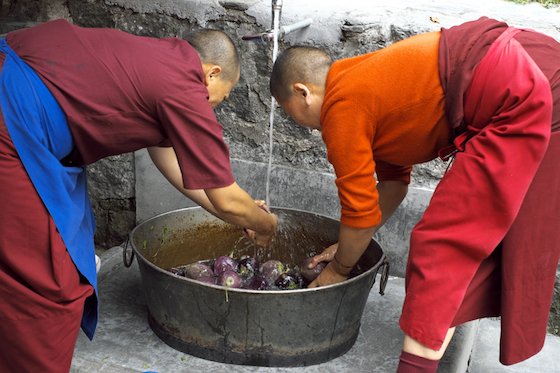This is an illustrated list of some of the major Tibetan Buddhist holidays in 2019, as well as some other important dates in the Tibetan calendar.

Front and back of the 2019 Tibetan Nuns Project calendar available through our online store.
Each year, the Tibetan Nuns Project publishes a calendar with the Tibetan Buddhist holidays and other important ritual dates, plus the phases of the moon, inspirational quotes, and major US and Canadian holidays. This beautiful 2019 calendar is available from our online store. Know that, by buying this calendar, you are helping to provide education, food, shelter, and health care for over 700 Tibetan Buddhist nuns living in northern India.
February 5 2019: Losar (Tibetan New Year)
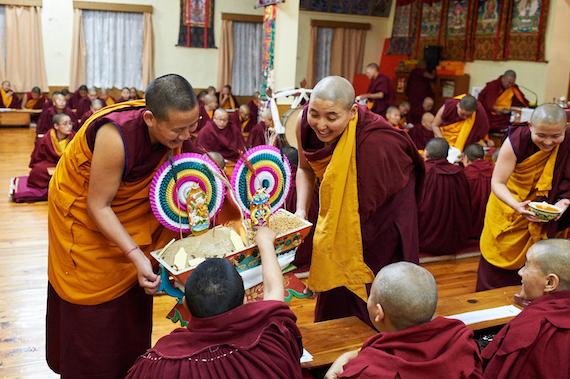
Tibetan Buddhist nuns at Dolma Ling Nunnery and Institute celebrate Losar. Photo courtesy of Olivier Adam.
Losar, the Tibetan New Year, is a very special time of year. This year, February 5th is the first day of the Earth Pig Year of 2146 according to the Tibetan calendar. Losar-related rituals fall into two distinct parts. First, the nuns, like all Tibetans, say goodbye to the old year and let go of all its negative or bad aspects. Part of this involves cleaning one’s home or room from top to bottom. After that, the Losar or “new year” is welcomed with prayers and by inviting all good, auspicious things into our homes and our lives. Special food is prepared such as such as khapse and a noodle soup called guthuk. See this recipe for vegetarian guthuk.
March 10 and March 12: Tibetan Uprising Day

Nuns, monks, and lay people hold Tibetan flags and banners as they take part in a demonstration in Dharamsala, India to mark March 10th, Tibetan Uprising Day. Photo courtesy of the Nuns’ Media Team.
While not a Tibetan Buddhist holiday, March 10th is a very important date in the Tibetan calendar. This year marks the 60th anniversary of the Tibetan National Uprising. Around the world, Tibetans and their supporters remember and pay tribute to all those who have sacrificed their lives for Tibet’s struggle. An estimated one million Tibetans have perished and 98% of monasteries and nunneries were destroyed under the Chinese occupation.
March 12th 2019 marks the 60th anniversary of the Tibetan Women’s Uprising. Sixty years ago, following the National Uprising Day on March 10th, thousands of Tibetan women gathered in front of the Potala Palace in Lhasa to demonstrate for Tibetan independence.
June 17 2019: Saga Dawa Düchen
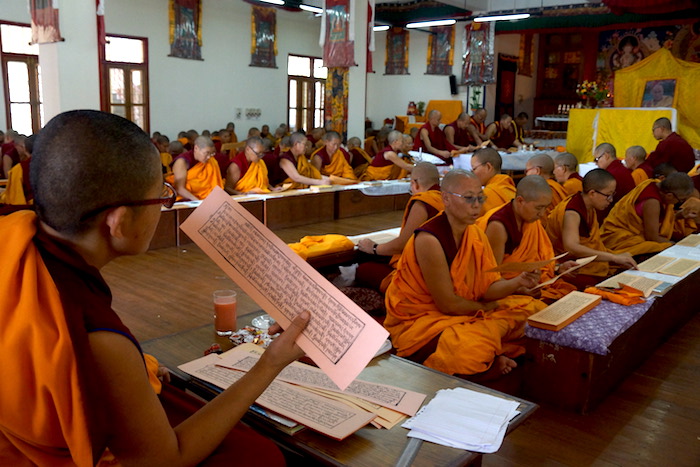
Every year, during the month of Saga Dawa, over a period of several days, the nuns at Dolma Ling Nunnery read the entire Tibetan Buddhist canon or Kangyur, the 108 volumes of the spoken words of the Buddha. Photo courtesy of the Nuns’ Media Team.
The most important month in the Tibetan lunar calendar is Saga Dawa, the 4th month which runs from June 4th to July 2nd 2019. The 15th day of this lunar month, the full moon day, is called Saga Dawa Düchen. Düchen means “great occasion” and this day is the single most holy day of the year for Tibetan Buddhists. In 2019, Saga Dawa Düchen falls on June 17th. Saga Dawa Düchen commemorates the birth, enlightenment, and parinirvana of Buddha Shakyamuni. In other Buddhist traditions this occasion is known as Vesak or is sometimes called Buddha Day.
Saga Dawa is known as the month of merits. Tibetan Buddhists make extra efforts to practice more generosity, virtue, and compassion in order to accumulate greater merit. Tibetans believe that during this month, the merits of one’s actions are multiplied. On the 15th day of the month the merits of one’s actions are hugely increased.
July 6: His Holiness the Dalai Lama’s Birthday
 Around the world, His Holiness the Dalai Lama’s birthday on July 6th will be celebrated with happiness and prayers for his good health and long life. This year His Holiness the Dalai Lama turns 84. The nuns will pray and make special offerings of tsok, khataks (prayer scarves), and sangsol (incense offering) to His Holiness. It’s a day of celebration with special food, such as Tibetan momos, the steamed savory dumplings that are much loved by Tibetans around the world and that are often made on Tibetan Buddhist holidays.
Around the world, His Holiness the Dalai Lama’s birthday on July 6th will be celebrated with happiness and prayers for his good health and long life. This year His Holiness the Dalai Lama turns 84. The nuns will pray and make special offerings of tsok, khataks (prayer scarves), and sangsol (incense offering) to His Holiness. It’s a day of celebration with special food, such as Tibetan momos, the steamed savory dumplings that are much loved by Tibetans around the world and that are often made on Tibetan Buddhist holidays.
July 16: Universal Prayer Day
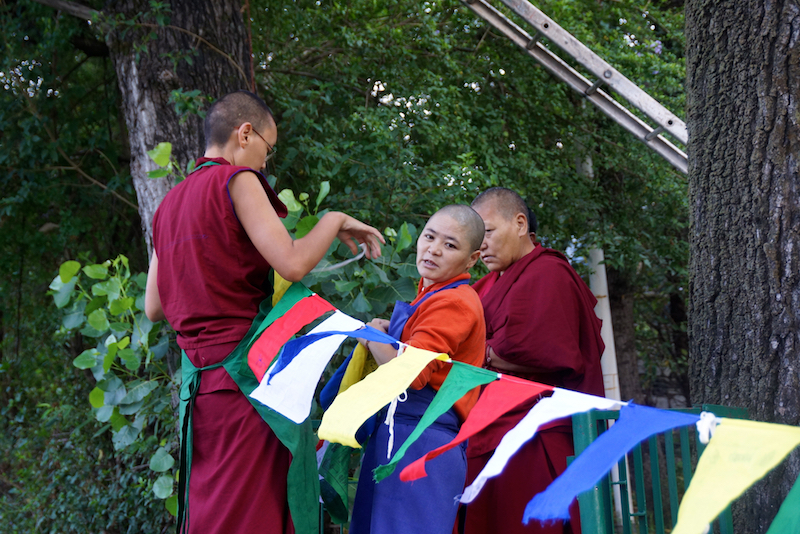
Tibetan Buddhist nuns hang new prayer flags on Universal Prayer Day. Photo courtesy of Nuns Media Team.
Universal Prayer Day or Dzam Ling Chi Sang falls on the 15th day of the 5th month of the Tibetan Lunar calendar, so in June or July. It is a time for spiritual cleansing. Tibetans hang prayer flags and burn juniper twigs.
August 4 2019: Buddha’s First Teaching
Called Chokhor Düchen, this important day falls on the fourth day of the sixth lunar month. This day is the third “great occasion” (düchen) in the Tibetan Buddhist calendar. It celebrates the first teaching by the historical Buddha, named Siddhartha at birth and commonly known as Shakyamuni Buddha. On this day, over 2,500 years ago, the Buddha gave the teaching of the Four Noble Truths in Sarnath, shortly after attaining enlightenment in Bodhgaya. This event is known as the “turning of the wheel of dharma”. In Theravada traditions, this event is remembered on Dhamma Day, also known as Asalha Puja, and is generally marked on the full moon of the eighth lunar month. To celebrate Chokhor Düchen, Tibetan Buddhists make pilgrimages to holy places, offer incense, and hang prayer flags.
November 19 2019: Buddha’s Descent from Heaven
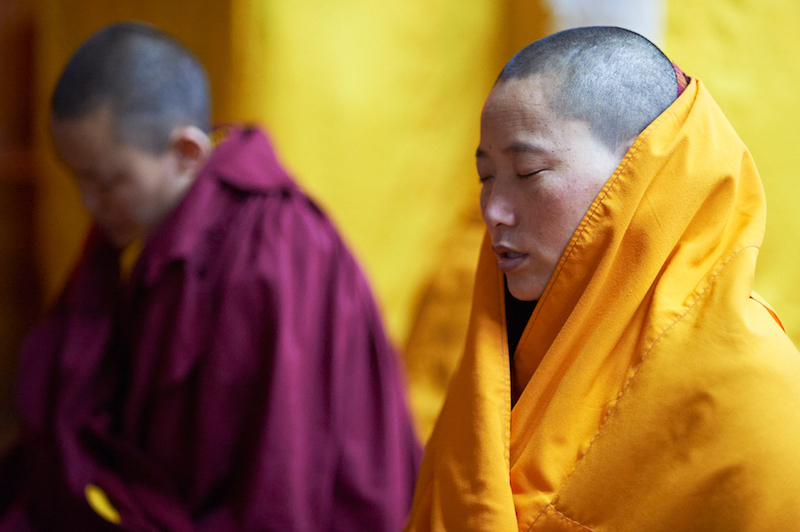
Tibetan Buddhist nuns praying. Photo courtesy of Olivier Adam.
Another “great occasion” or düchen in the Tibetan Buddhist calendar is Lhabab Düchen. This date commemorates the Buddha’s descent from the heavenly realm following his visit there to teach his deceased mother. Lhabab Düchen occurs on the 22nd day of the ninth lunar month, according to Tibetan calendar. On this day, the karmic effects of our actions are multiplied millions of times. In the Tibetan Buddhist tradition, people engage in virtuous activities and prayer to gain merit and to mark this special occasion.
February 24 2020: Losar (Tibetan New Year)
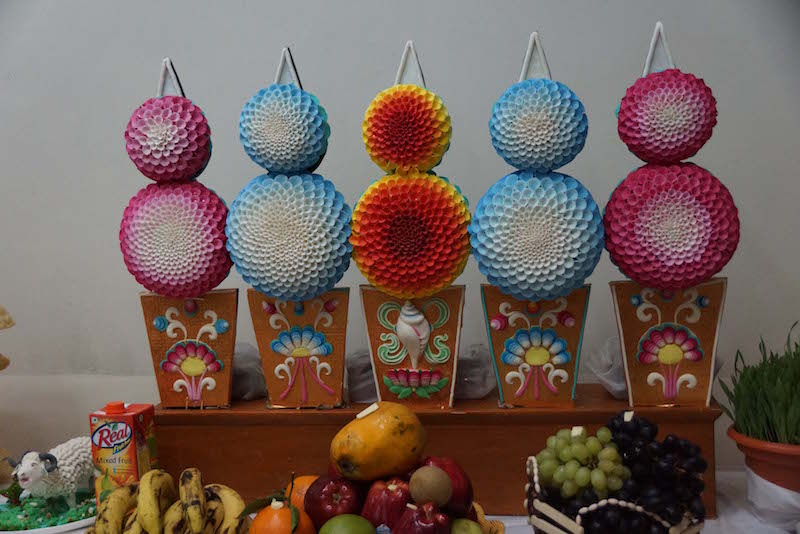
Butter sculptures and offering made by the Tibetan nuns for Losar, Tibetan New Year.
Losar in 2020 falls on February 24th, 2020 and is the Year of the Iron Mouse 2147 in the Tibetan calendar.
Tibetan Buddhist Holidays in 2019 and the Tibetan Nuns Project Calendar
It is still possible to order copies of our 2019 Tibetan Nuns Project calendar. It’s a great way to keep track of the Tibetan Buddhist holidays and all the special events throughout the year.

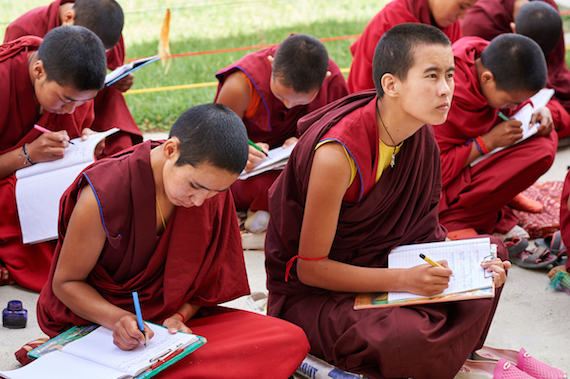
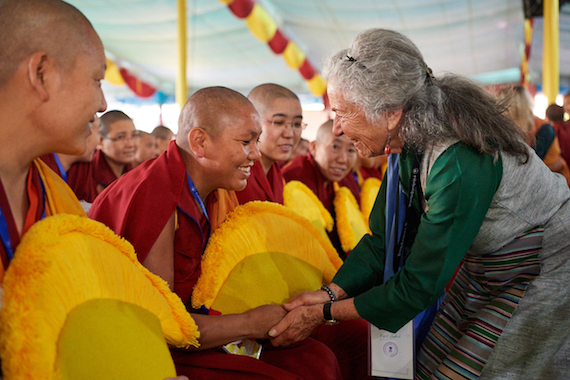



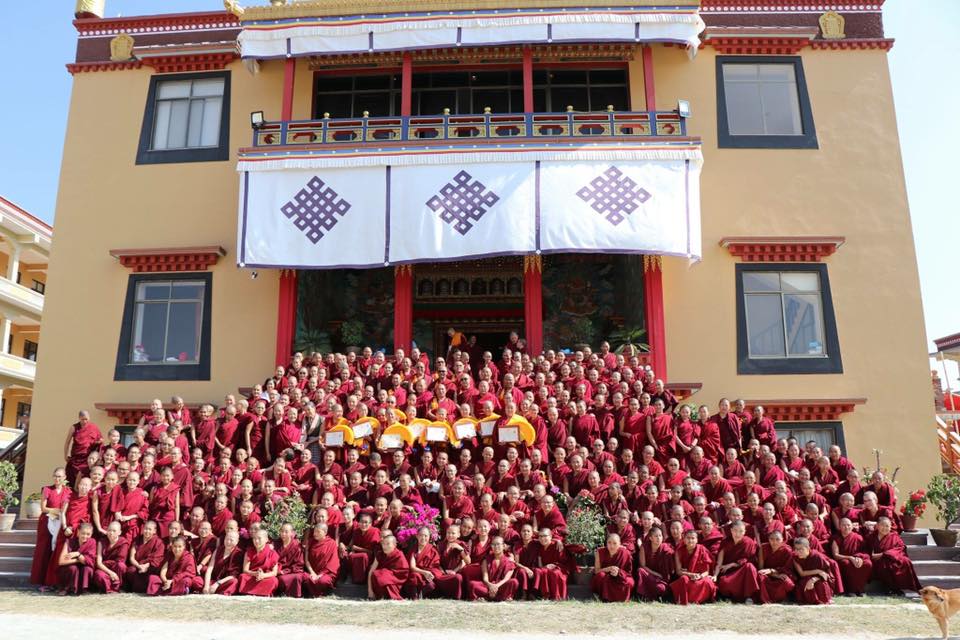

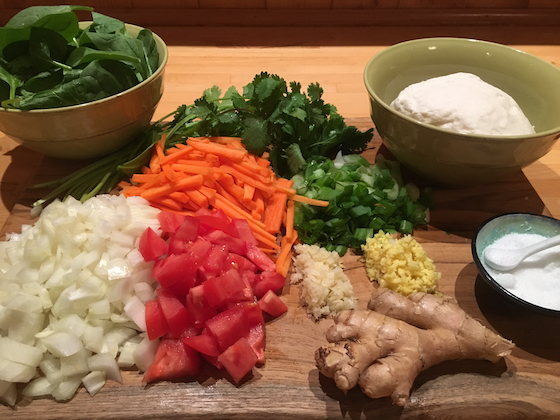
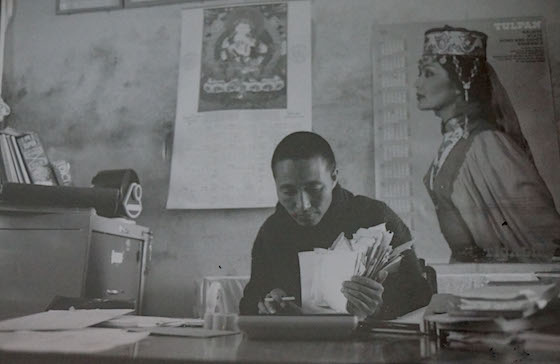

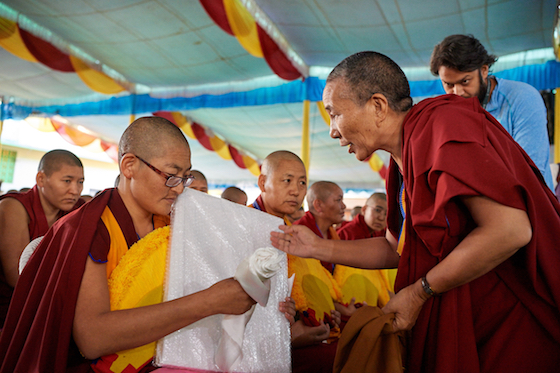
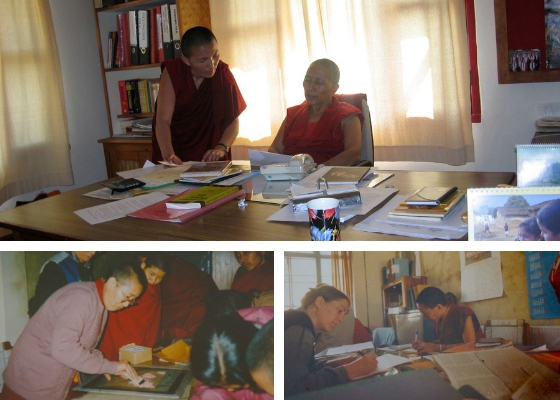
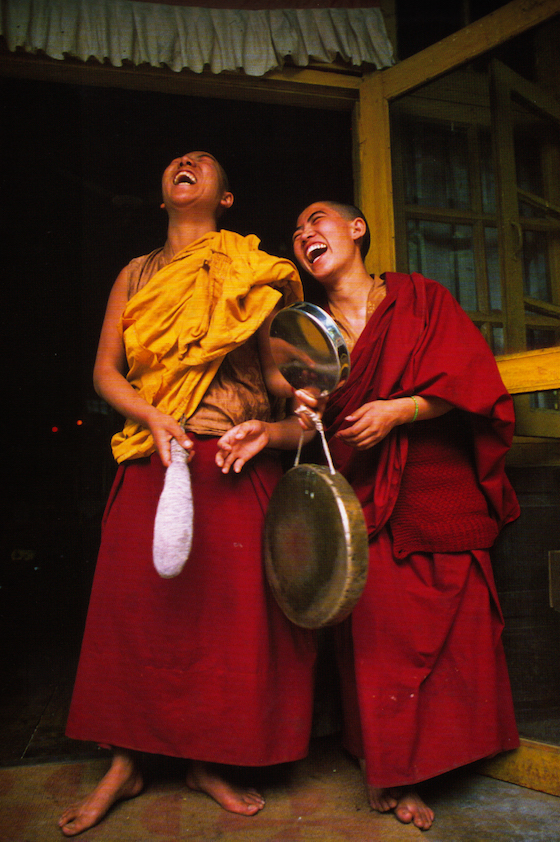 Laughing Nuns: The Story Behind the Photograph
Laughing Nuns: The Story Behind the Photograph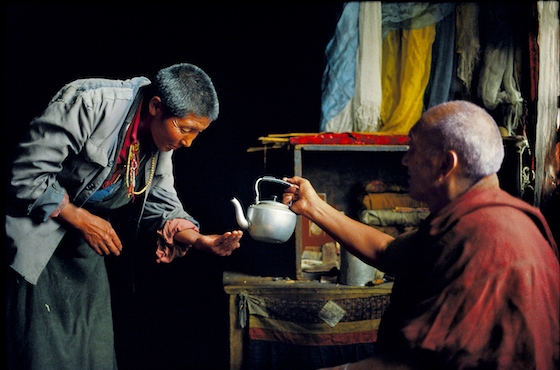 Giving and Receiving
Giving and Receiving